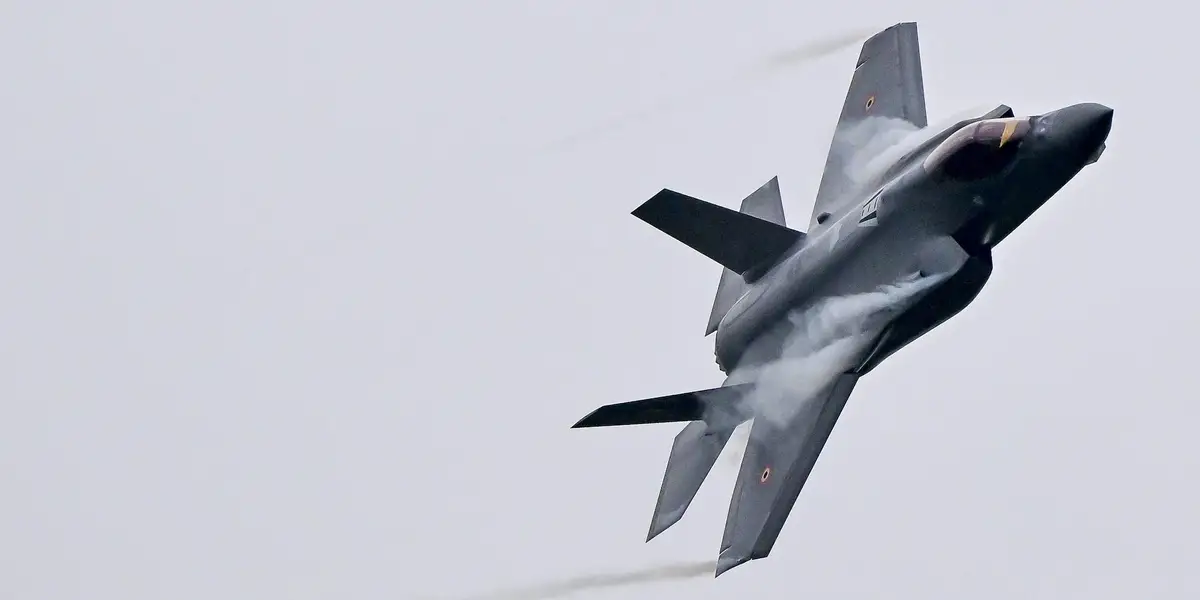New radar technology has flattened Earth, making targets low: RAF

New radar and missile technologies have resulted in a “flattening of the Earth” that leaves even people extremely vulnerable low-flying planes pose a much higher risk, a Royal Air Force officer said this week.
Air Vice Marshal James Beck, the RAF’s director of capabilities and programmes, said that when he flew the Tornado multi-role fighter aircraft in the early 2000s, the underlying assumption was still “that very low altitude flight would allow a formation to penetrate deep into enemy territory without being detected by their integrated air missile defense systems”.
The assumption was that hostile radars couldn’t see through the ground, and that “underpinned our tactical thinking for many decades,” he told the U.K.’s Royal United Services Institute on Monday.
Hiding terrain has long been a credible tactic, with fighters flying low and fast below the radar horizon and using the curvature of the Earth and ground echo to evade line-of-sight radars. This approach made sense compared to older radars and surface-to-air missile systems. However, advances make low-level penetration alone insufficient.
New developments in radar and missiles have made the classic approach “obsolete,” Beck said, calling the technological change the equivalent of “a flattening of the earth.”
He highlighted advances in radar technology, such as Active Electronically Scanned Array (AESA) radar, which has electronically steered beams to detect targets and allows crews to track multiple targets. Beck also highlighted the challenge of new Over-the-Horizon (OTH) radars, which can do exactly what their name suggests and see beyond the curve of the Earth. And then there are also the “pervasive capabilities” of airborne surveillance aircraft.
Detection ranges have increased from hundreds of nautical miles to thousands, he said, adding that the ranges of surface-to-air and surface-to-surface missiles are also increasing rapidly.
Gen. James Hecker, commander of U.S. Air Forces in Europe, previously said his “number one priority within NATO, on the air side, was counter-A2AD missions, that is, countering anti-access and area denial missions.” The threats in this space are expanding.
Beck said these developments will soon make it much more difficult for air forces to enter the enemy battlespace. The military uses what are called anti-access and area denial strategies – layers of radars, missiles and sensors – to keep adversaries out.
These restricted areas are already large – “measured in countries,” Beck said – and could expand considerably. Over the next decade, he predicts, “they will probably be measured by continent.”
A big challenge
The flattening of the modern battlespace, Beck warns, will make it increasingly difficult for aircraft to penetrate deep into enemy territory without being detected or engaged.
It’s a problem. Taking control of the air and penetrating deep to destroy command nodes, logistics centers and missile sites far behind the front line is essential to victory.
The war in Ukraine, a fierce struggle of attrition which is eating away at equipment and troops, “Continues to show us what happens if we don’t get air control right from the start,” Beck said.
“Indeed, the longer the conflict lasts, the more and more compelling this lesson becomes.”
Heavy air defenses from Ukraine and Russia prevented either side from gaining air control. DANIEL MIHAILESCU/AFP via Getty Images
Neither Ukraine nor Russia has managed to gain control of the air, as they are pinned down by powerful air defense networks that threaten anything that flies. There have been numerous videos of Ukrainian warplanes flying low, hugging the ground and popping up only to drop munitions, but we do not see penetration flights into enemy-controlled airspace.
Both sides, however, are launching drones and missiles deep behind the lines, emphasizing the importance of maintaining robust air and missile defense systems, especially as the adversary’s capabilities have, as Beck put it, “advanced dramatically.”
“The pace of change continues to accelerate, with a growing number of state and non-state actors posing new challenges,” he said.
Future Warfare Requirements
Leveraging new technologies to stay ahead of the curve will be critical as the battlespace evolves.
“As a first step,” Beck explained, the UK “will prioritize upgrading our existing command and control capabilities to maximize the effectiveness of current systems and lay the foundations for future improvements.”
He added that the UK would also capitalize on advances in sensor technology, including surface, airborne and space-based sensors, “to extend detection and tracking ranges, increasing the opportunities to engage and defeat threats through a multi-layered defense system”. The goal is also to extend the reach of active and passive defensive systems, he said.
Particularly important work when it comes to being able to penetrate heavily defended airspace is the development of sixth-generation aircraft, such as the F-47 of the US Air Force’s Next Generation Air Dominance program or the Global Combat Air Program (GCAP) that the United Kingdom, Italy and Japan are working on.
Beck said that right now, fifth-generation aircraft like the F-35 Lightning II Joint Strike Fighter are the bare minimum to gain an advantage in a modern air war. Sixth generation fighters will, among other things, have to have advanced stealth.
Without this full-spectrum stealth, aircraft “will be unable to enter an adversary’s A2AD bubble at a level where they would be able to produce a significant effect,” he said.
He said sixth-generation aircraft will need to conduct deep strikes that are becoming increasingly difficult and “detect, select and pursue targets that operate within or on the other side of an adversary’s integrated missile defense system.”
UK Air Force Chief of Staff Beck said: “has made it clear that control of the air is the one thing we must master above all else.”
ـــــــــــــــــــــــــــــــــــــــــــــــــــــــــــــــــــــــــــــــــــــــــــــــــــــــــــــــــ
Soon, there will be articles covering various topics, such as:
Insurance, Loans, Mortgage, Attorney, Credit, Lawyer, Donate, Degree, Hosting, Claim, Conference Call, Trading, Software, Recovery, Transfer, Gas/Electicity, Classes, Rehab, Treatment, Cord Blood, Best mesothelioma lawyer, Truck accident lawyer, Buy life insurance online, Business VoIP provider, EMR software for clinics, Structured settlement companies, motorcycle injury lawyer, motorcycle injury attorney, spinal cord injury attorney, birth injury attorney, auto accident injury attorney, spinal cord injury lawyer, car injury attorney, motorcycle accident injury attorney, catastrophic injury lawyer, birth injury lawyer, workplace injury attorney, motorcycle injury attorneys, head injury lawyer, personal injury attorneys, traumatic brain injury attorney, train accident lawyer, brain injury attorney, auto injury attorney, serious injury attorney, personal injury lawyer, truck injury lawyer, injury attorneys, back injury lawyer, injury lawyer near me, injury lawyer,
If you would like to see these articles, please write so in the comments.





